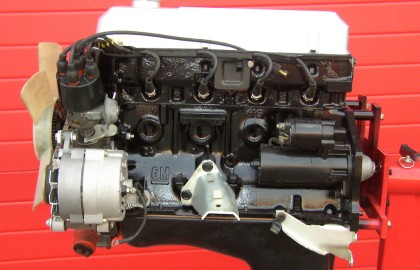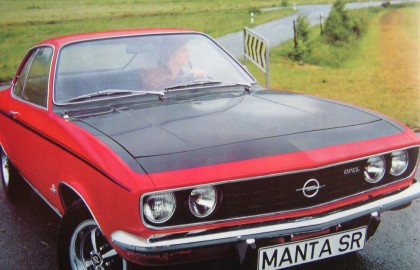Manta Ascona A 1970-1975
Modelnumbers:
| 58 Manta coupé | 81 Ascona saloon 2 deurs | 88 Ascona saloon de luxe 2 deurs |
| 59 Manta coupé de luxe | 84 Ascona voyage station 3 deurs | 89 Ascona voyage station de luxe 3 deurs |
| 86 Ascona saloon 4 deurs | ||
| MA all Manta A Models | 87 Ascona saloon de luxe 4 deurs | AA all Ascona A models |
Opel introduced the Manta and Ascona in 1970 to strengthen their share of the large family car market, in which they were underrepresented. Both cars had the same base with the Manta also having a sports version. Originally the launch should have taken place in 1971 as a reaction to the enormous sales success which Ford had achieved with their Capri, brought onto the market in January 1969.
Opel naturally also wanted to profit from the apparently large group of consumers looking for a sporty but technically reliable four seater. Opel had been working on the Manta and Ascona from the 60´s under the name ´Project 1450´. The Ascona was supposed to fit between the Kadett and the Rekord in terms of price and dimensions. The 1450 Coupe project had the highest priority because of the success of the Capri, inspired by the American Mustang.
The Manta owed its name to a thornback found in the Red Sea. Originally the basic version was made, followed by a version with a sports package for the Manta SR. In the Autumn of 1972, the Berlinetta was added and in the Spring of 1974 the GT/E. This Manta, with its body work carried out in special colours, was sold with the 19E 105 hp engine already known from the Kadett C.
A special Manta version was the TE-2800, which had a 2784cc 145 hp six cylinder line engine from the Commodore. The TE-2800 was built by Vic Heylen´s company Transeurop Engineering in Zolder in Belgium. The development of the Ascona saw Opel trying to develop a family car between the Kadett and Rekord. The reason for this positioning was the increased standard of living and the accordingly higher expectations which the public placed on new models.
The Ascona could be delivered in three different models, a two door, a four door and a Voyage Combi. With this latter version the most obvious features were the vinyl covered roof and fake wooden veneer on the flanks. Opel wanted to attract professional as well as recreational drivers with the Voyage. In the Autum of 1973 the Voyage was brought out in a simpler version; the sedan also underwent a small number of changes in the interior and exterior.
The Manta and Ascona were sold with three different engines, the 1.6N (68hp), the 1.6S (80hp) and the 1.9S (90hp), already known from the Rekord. In March 1972 Opel launched the Ascona and the Manta with a 1.2S engine (60hp), which was aimed at making the change from a Kadett to these models simpler.
In 1975 the last of in Total 690,000 Asconas en 500,000 Mantas rolled off the production line.




